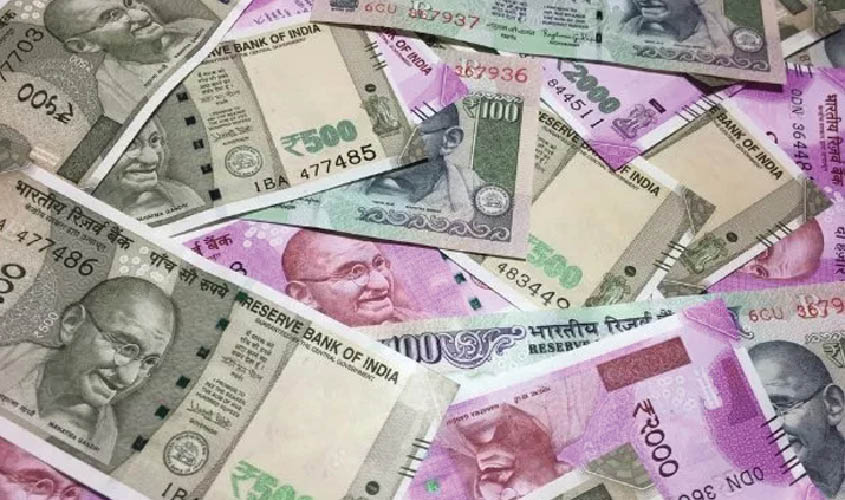Why doesn’t the government think beyond six months? Speaking to a news channel, Finance Minister Arun Jaitley pointed out that his government did not need money from the Reserve Bank of India (RBI) “in the next six months”. But there won’t be doom in the next six months—hopefully. So, what after that? After me, the deluge?
The government would need money, the RBI’s or the taxpayer’s, because the present regime has not cut down expenditure. In the earlier years of the Narendra Modi government, crude prices were low, the fiscal and current account
The Indian state, under Sonia Gandhi’s charge, had become a revenue-guzzling monster, which was fed generously by the entitlements conjured up by the circus called the National Advisory Council. It was expected of Prime Minister Narendra Modi, who had championed free market slogans during the run-up to the 2014 general elections, that he would reduce the size and scope of government. But that was not to be.
The NDA showed little commitment to reforms, let alone to the much-needed bold moves like privatisation and drastic changes in income tax slabs. Its economic philosophy, if it can be called so, comprised Sanskritised repackaging of the pre-existing welfarist measures. The denouement? The ailing body-economic, in urgent need of the liberalisation treatment, has been administered harsh medicines like demonetisation.
But reality has a way of asserting itself. Investment is not happening, employment is not getting generated (there is nothing to suggest that even the job losses occasioned by demonetisation have been compensated), and public finance is under great strain.
India Ratings and Research recently said that the fiscal deficit target of 3.3% for 2018-19 will be missed. The agency, which is part of Fitch, has pegged the deficit at 3.5% of GDP for the current financial year. In absolute terms, it would be Rs 6.67 lakh crore, against the budgeted Rs 6.24 lakh crore. “The pressure on government finances is mainly arising from the revenue side, particularly from indirect taxes and non-tax revenue,” the agency said.
These are real numbers, unpolluted by officialspeak. In fact, they throw light on the claims the government has been making day in and day out. For instance, on the second anniversary of demonetisation, Arun Jaitley wrote, “The impact of demonetisation has been felt on collection of personal income tax. Its collections were higher in Financial Year 2018-19 (till 31-10-2018) compared to the previous year by 20.2 per cent.”
Further, he wrote, “demonetisation and implementation of the GST curbed cash transactions in a big way. An increase in the digital transactions is visible. This formalisation of the economy has led to the tax payer base increase from 6.4 million in the pre-GST regime to 12 million tax payers in the post-GST regime. The actual consumption of goods and services being recorded as a part of the tax net has now increased. This has given a buoyancy to the indirect tax growth in the economy. This has benefited both the Centre and the states.”
If the government has been able to collect higher direct tax revenue, there has been “buoyancy” in the indirect tax growth, and the so-called reforms have “benefited both the Centre and the states,” why can’t it reduce the tax burden on petroleum products? More than anything else, costlier petrol and diesel get bad press for the government and can have adverse effect on the ruling party’s electoral prospects.
If what FM Jaitley claims is correct, the government should have had no problems in shelling out Rs 1,000 crore for Air India. But it had to dip into the National Small Savings Fund for the purpose instead. Quite apart from using small savers’ money to keep a white elephant alive, didn’t it show the dire straits the fiscal situation is in? If the government’s “reforms” have been so successful, why is it finding it hard to meet the fiscal target as the India Ratings and Research has shown?
Further, the government had a financial windfall when crude prices were low, but the taxation on petroleum goods was kept high for years. Crude prices have started falling, but the decline in petrol and diesel prices are again not proportionate to the fall in crude. Where did the windfall go? Why wasn’t it used to lower taxes or retiring public debt? Why did the fiscal deficit keep rising in absolute numbers? From Rs 5 lakh crore in 2014-15, to Rs 5.32 lakh crore in the next fiscal, Rs 535,618 in 2015-16, Rs 546,531 crore in 2016-17, and Rs 594,849 crore in 2017-18, and Rs 624,276 crore in this fiscal.
There are myriad questions, but no answers.

